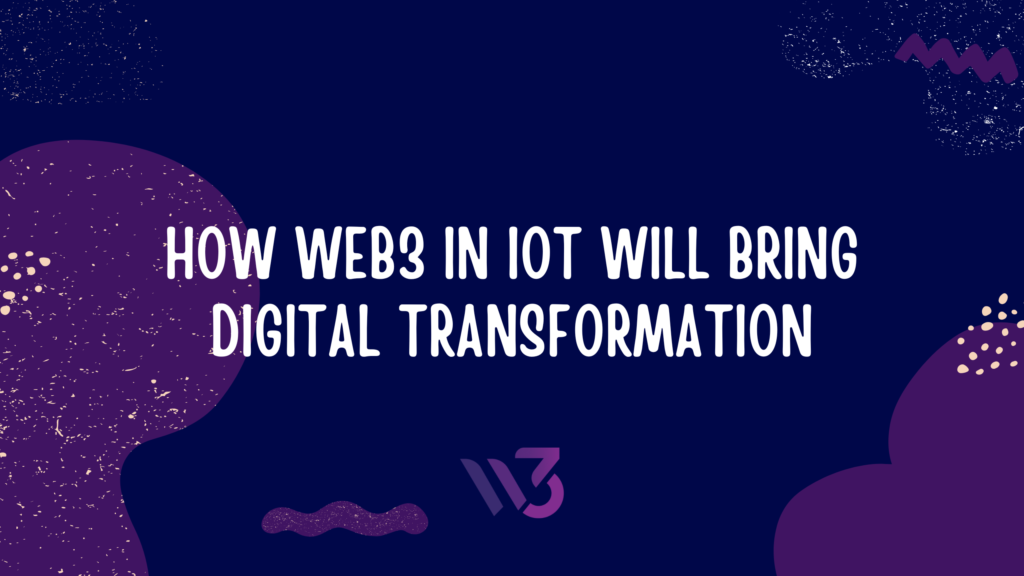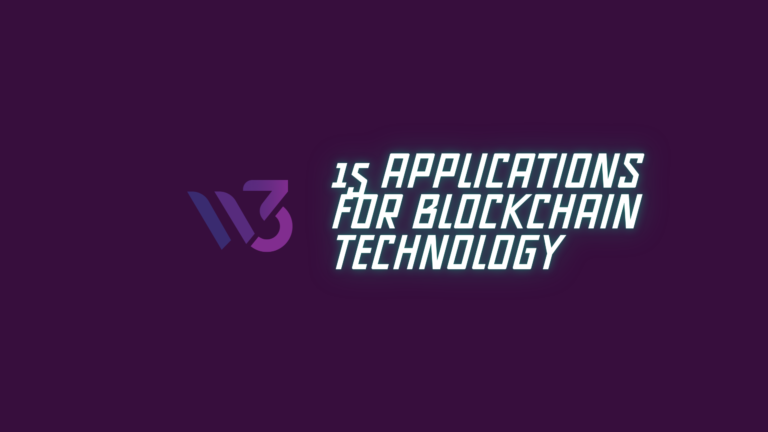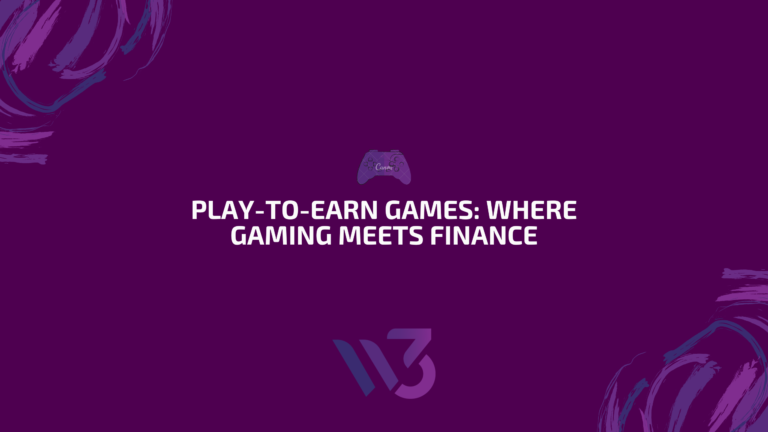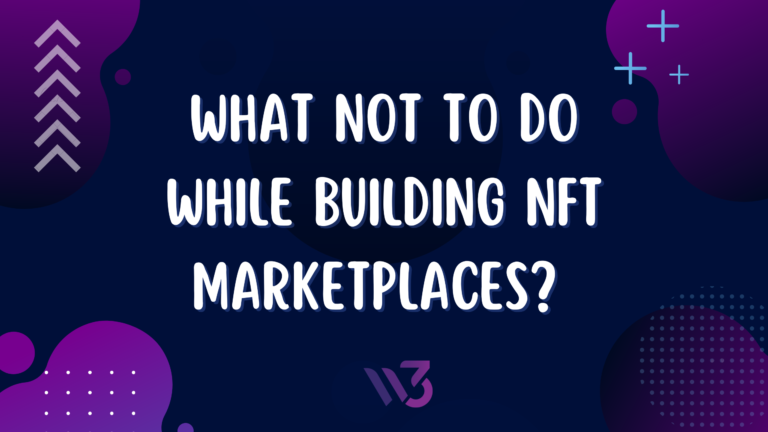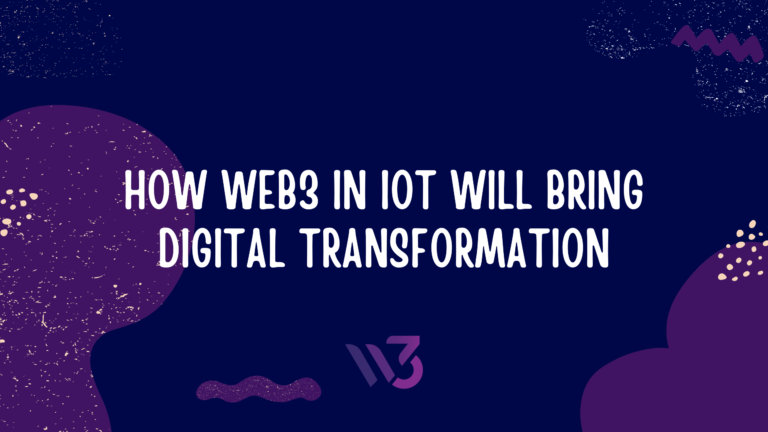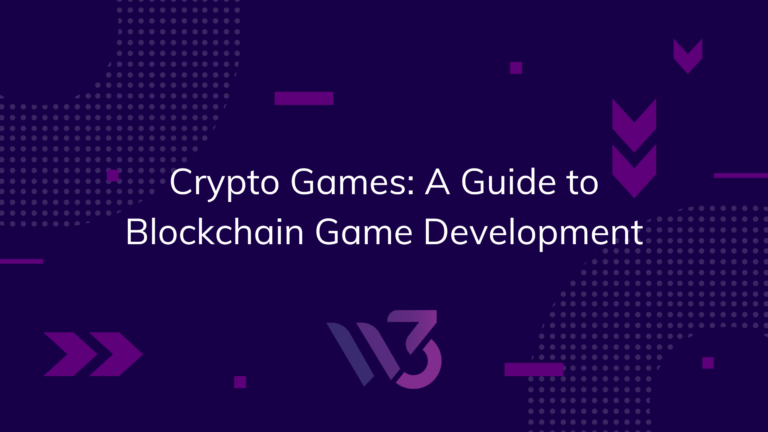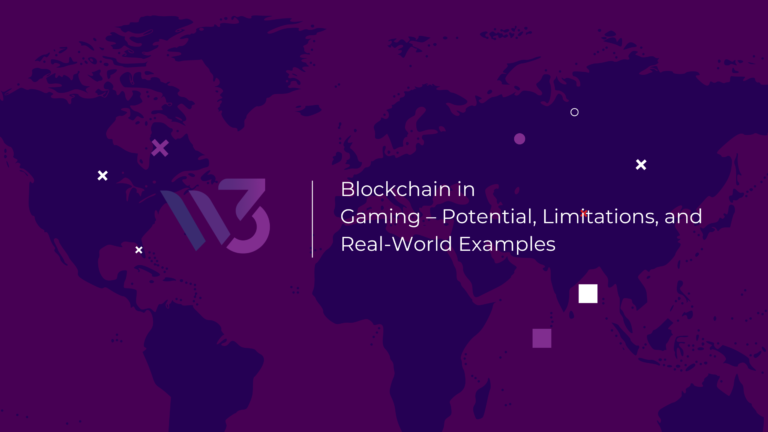The use of Internet of Things (IoT) devices is increasing at an alarming rate in businesses and daily life. Despite supply chain problems and chip shortages, global IoT connections are expected to grow to 27 billion by 2025. Today’s IoT companies are built on centralized infrastructure, which is fully managed by organizations where data lock-ins and user security are the main issues. Organizations have extensively used the data collected from IoT devices to maximize their business impact and create value.
Web3, the third iteration on the internet, is a paradigm shift that could fundamentally transform the way IoT businesses operate. A typical web-based app makes two major promises of IoT in web3: ownership and decentralization. To explain more, web3 in IoT is a network that runs an application on decentralized, community-powered networks and aims to give back ownership to its users. This paradigm shift opens up new opportunities for web2-based IoT companies to redefine their value propositions, customer engagement strategies, and other business models.
As web3 is becoming more mainstream, it has attracted much attention from IoT industry professionals. However, IoT business leaders must develop a web3 digital transformation plan that works with current IoT system architectures and business models.
This article discusses IoT and web3 and how web3 in IoT can bring digital transformation to the IoT industry, covering the below points.
- What is web3?
- What is the IoT?
- Understanding the inherent security challenges with IoT
- How blockchain infuses decentralization and security into IoT devices
- Key characteristics of web3-based IoT applications
- How to adapt web3 in the IoT model?
- How to do the digital transformation for web3 IoT business models?
What is web3?
Web3 describes the vision for the third iteration of the internet. It is a platform that uses blockchains, cryptocurrency, and NFTs to give back power to users through ownership. Web1 was read-only, web2 was read/write, and web3 will become read-write-own.
Web3’s core ideas
It isn’t easy to define web3 clearly, but some core principles guide its creation.
- Web3 is distributed – Instead of large swaths of the internet owned and controlled by centralized entities and large numbers of users, ownership is shared among its builders and users.
- Web3 is permissive – Everyone has equal access to web3, and no one is excluded.
- Web3 supports native payments- Web3 uses cryptocurrency to send and spend money online instead of relying upon the old payment processors and banks’ infrastructure.
- Web3 is trustless- It uses economic mechanisms and incentives to operate instead of relying upon trusted third parties.
Web3 features
Ownership
Web3 allows you to take control of your digital assets uniquely. Let’s say that you are playing a web2 video game. Your account is tied to any in-game purchase, and these items will be lost if the game creators delete your account. Similarly, if you quit playing the game, you also lose all the value you have invested in your in-game items. Web3 allows direct ownership via non-fungible tokens, and your ownership is not transferrable by anyone, even the game creators. You can also sell or trade in-game items on the open market to regain their value if you quit playing.
Censorship resistance
In the current web2 model, the power dynamics between content creators and platforms are severely imbalanced. On the contrary, web3 stores your data on the blockchain. Consequently, you can take your reputation with you if you decide to leave a platform. Web2 requires content creators to trust platforms and not change the rules. However, censorship resistance is an inherent feature of a web3 platform.
Decentralized autonomous organizations (DAOs)
Web3 leverages your data ownership and can make you a part of a collective that owns the platform using tokens. These tokens act as a share in a company. Through DAOs, you can coordinate the decentralized ownership for making decisions about the platform’s future. DAOs can be considered smart contracts that are agreed upon and make decentralized decisions automated over a pool (token) of resources. Many web3 communities are referred to as DAOs by users, and each community has a different level of automation by code and decentralization.
Identity
We normally create our accounts on every platform that we use. We might have Twitter, YouTube, and Reddit accounts, and we can change our profile picture or display name. However, it must be done across all accounts. Although social sign-ins can be used in certain cases, this poses a problem of censorship. These platforms can quickly lock us out of our entire online existence. So, to create an account, we will need to give them our personal information.
Web3 addresses these issues by allowing you to control your digital identity via an Ethereum address or ENS profile. Using an Ethereum address provides a single login across secure, censorship-resistant, and anonymous platforms.
Native payments
Web2’s payment infrastructure is dependent on banks and payment processing companies, and this excludes people without bank accounts or who live in the wrong country. Web3 is a token based that uses tokens such as ETH for money transfers directly to the browser. As a result, it does not require any trusted third parties.
What is the IoT?
The Internet of Things (IoT) is commonly known as a network of physical objects connected via the internet, and it allows for information to be exchanged and processed. It is easy to see that IoT can encompass many different “things,” so it is difficult to answer the question, “What is the Internet of Things?”
One example of smart cars is vehicles with integrated sensors, devices, and software. These vehicles can be connected to the internet via the cloud to form an IoT network. Already our cars have smart elements that constantly monitor any operating parameter. Then they analyze it to suggest interventions (so-called predictive maintenance). Smart cars can also integrate other devices via Bluetooth and USB to provide entertainment and information. NFC (Near Field Communication) makes car sharing possible. Finally, we cannot expect autonomous driving without the IoT. It requires communication with other vehicles to avoid collisions, traffic management infrastructure, and the network to receive traffic reports and weather information.
The Internet of Things is divided into devices and communication levels. This is the first view of the structure, and the following sections show exactly what all things IoT consists of.
Sensors/ Devices
Sensors are devices or parts of devices that collect information from an environment and convert it into raw data to be sent to other IoT devices. Their primary task is to convert physical phenomena (temperature, heartbeat, air composition, etc.) into digital data. We can think of IoT as a virtual organism. Here the 5 senses act as sensors for the system that monitor the environment. They send physical phenomena as sensations through the nervous systems (the communication protocol) to reach the brain (the cloud). The information is stored in memory (storage) and processed (computing) to locate solutions. These will be converted into commands sent to other nerve centers (actuators), directing them to the targets (limbs) and modifying the conditions surrounding the organism.
Now let’s discuss each layer.
Communication protocols (connectivity layer)
The data gathered by sensors must be transmitted to other devices or the cloud. Therefore, peripheral IoT devices require a language to communicate. For example, WiFi, Bluetooth, and NFC allow for short-range communication. However, a protocol is required to send data to the cloud via the internet.
Smart gateway (security and management layer)
Although all sensors could be connected directly to the cloud via the internet, this would consume much more energy. Transferring collected data to a smart gateway via WiFi or Bluetooth is preferable, allowing two-way communication with the cloud.
Gateway brokerage can also be used for other purposes as described below:
-
Security by controlling IoT access and encrypting data
-
Transmitting commands to the actuators
-
Preprocessing data to create a summary of the information and send only relevant information
Cloud (computing and storage layer)
The sensors collect data to analyze, process and store in the cloud. This is the collection of software resources that an internet network makes available. The data is organized to be useful to other IoT devices. Web3 will feature Edge computing which is a new way to process information. The web3 system will further decentralize the computation of data in a spatial sense and is transferred it to individual devices at the IoT periphery. The devices process the collected data to reduce traffic and improve network performance. This functionality is similar to smartwatches, smartphones, and computers.
Actuators
The information collected by sensors can indicate the need to make a change after it has been processed by either the cloud or the hardware. The information is then converted into commands and sent to actuators. This will, in turn, cause the response from target objects. These physical objects or tools can influence the environment to alter its state. Actuators do not directly affect the environment but delegate this task to the target objects.
Application/User interfaces
The Internet of Things does not only involve automation, but it also involves the user. We can interact with the IoT through applications and interfaces often stored in smartwatches or tablets. Through these interfaces, remotely controlling our smart objects and ordering changes can be done. Using these interfaces, we can also set our preferences and receive customized notifications from sensors. However, the IoT has more utility than everyday use. Big data collected via sensors are useful for both statistical and experimental purposes.
Understanding the inherent security challenges with IoT
Security is a key issue in web2-based IoT applications. Before you start looking for ways to secure your IoT platforms, it’s a good idea to research potential cybersecurity problems in your company. This includes solutions like a shift left security approach, meaning security is embedded in the early phases of application development.
These are some of the most common security concerns in IoT.
Software and firmware vulnerabilities
The following security flaws can make it difficult to ensure the safety of IoT devices.
- Insufficient computational power to provide sufficient built-in security
- Inefficient access control for IoT systems
- Inefficient funds to adequately test and develop the firmware’s security
- IoT device technical and budgetary limitations make it difficult to patch and upgrade regularly
- Users don’t update their devices regularly, creating unpatched vulnerabilities
- Some older devices might not work with the latest software updates
- An attacker could easily insert corrupted chips into a chip or hack through radio waves
Possibilities of cloud breaches
Hackers could gain access to your IoT data by intercepting unencrypted communications. Your location, bank account information and medical records could all be on your device. An attacker can also access sensitive information by using weakly secured communications. Even if all data is transferred to cloud storage by the user, hackers can still target cloud-hosted applications. Data leakage is possible not only from devices but also from the cloud environments they are connected to. DevOps professionals, developers, and software engineers must find ways to protect technology and prevent hackers from breaching it.
Malware risks
A recent survey shows that smart TVs, set-top boxes, and smartwatches are most vulnerable to malware attacks. An attacker may be able to insert malware or infiltrate an IoT device to modify its functionality and gain personal data. This could put the devices and their users at risk. The manufacturer often fails to implement proper software security measures to protect their devices. When these devices are made, security is often neglected. This leaves buyers with the responsibility of dealing with any malware infections.
Security is a key issue in web2-based IoT applications. Before you start looking for ways to secure your IoT platforms, it’s a good idea to research potential cybersecurity problems in your company. This includes solutions like a shift left security approach, meaning security is embedded in the early phases of application development.
These are some of the most common security concerns in IoT.
Software and firmware vulnerabilities
The following security flaws can make it difficult to ensure the safety of IoT devices.
- Insufficient computational power to provide sufficient built-in security
- Inefficient access control for IoT systems
- Inefficient funds to adequately test and develop the firmware’s security
- IoT device technical and budgetary limitations make it difficult to patch and upgrade regularly
- Users don’t update their devices regularly, creating unpatched vulnerabilities
- Some older devices might not work with the latest software updates
- An attacker could easily insert corrupted chips into a chip or hack through radio waves
Possibilities of cloud breaches
Hackers could gain access to your IoT data by intercepting unencrypted communications. Your location, bank account information and medical records could all be on your device. An attacker can also access sensitive information by using weakly secured communications. Even if all data is transferred to cloud storage by the user, hackers can still target cloud-hosted applications. Data leakage is possible not only from devices but also from the cloud environments they are connected to. DevOps professionals, developers, and software engineers must find ways to protect technology and prevent hackers from breaching it.
Malware risks
A recent survey shows that smart TVs, set-top boxes, and smartwatches are most vulnerable to malware attacks. An attacker may be able to insert malware or infiltrate an IoT device to modify its functionality and gain personal data. This could put the devices and their users at risk. The manufacturer often fails to implement proper software security measures to protect their devices. When these devices are made, security is often neglected. This leaves buyers with the responsibility of dealing with any malware infections.
How blockchain infuses decentralization and security into IoT devices
The fundamental layer of web3 is blockchain which is well-known for its solutions in financial fields. However, blocks can contain more information than the exchange of tokens and coins. Any data can be recorded immutably and distributed way. Then why not use blockchain to communicate between IoT devices? This would resolve some of the most pressing issues of the Internet of Things. IoT-recorded information by sensors is only useful if it is true. Therefore, the current IoT infrastructure relies on intermediaries and centralized entities to validate the data. In web3 IoT, blockchain would transform the IoT’s structure from Client/Server to peer-to-peer. Consensus mechanisms ( as with cryptocurrencies) can be used to verify transformation to address trustworthiness at the beginning. This would make IoT a trustless system that allows direct communication between devices without intermediation.
The majority of IoT units are already in public key infrastructure. If encrypted messages were stored on a blockchain using a cryptographic identity, it would create a ‘reputation.’ The blocks would not only tell you if a device has a reliable history, but they also record what it sent and to whom transparently. They are always accessible in an everlasting timeline. Each entity still retains its privacy despite the traceability of communications, and an alphanumeric string represents this. If encryption is extended to all networks, it could prevent DDoS attacks. This dual-key architecture would stop hacking attempts.
The IoT would also be able to use smart contracts technology, which is supported by many other blockchains. The IoT structure could eliminate actuators and replace them with blockchain-decentralized software.
Key characteristics of web3-based IoT applications
Organizations typically build and own web2-based IoT apps to meet specific business goals. So, IoT platforms and data gathered from smart devices are fully controlled by organizations in the present web2 model. While paying for IoT services and devices, customers don’t own the devices or collected data. However, web3-based IoT apps are not like their web2-based counterparts, and they are characterized primarily by
- customer-owned IoT equipment
- community-driven
- decentralized IoT infrastructure
- token-incentivized machine activity
In web3 IoT, each smart device will be able to bind with its blockchain wallet. Only the device owners can decide how they want to share data from their web3-based IoT applications. The community, in a decentralized fashion, manages the entire IoT infrastructure. Each stakeholder will receive compensation for certain utilities, such as storage, computation, connectivity etc. Additionally, web3-based IoT apps are often built on well-designed token economies models and use digital assets as incentives to encourage community participation.
How to adapt web3 in the IoT model?
Many web2-based IoT companies attract customers by creating smart devices and services with salient features and functions. They also conduct extensive marketing campaigns. The web3 technologies DeFi, non-fungible tokens and DAOs provide powerful resources to help develop new IoT business models. These technologies can also increase customer engagement and drive social impact. Organizations looking to adapt to the web3 in the IoT market might issue NFTs. These NFTs will allow them to represent their IoT products on blockchain and allow NFT holders specific rights (e.g., access to future products). Customers might be encouraged to share IoT data with organizations and make passive income through DeFi platforms. Customers could also be allowed to create a DAO with their customers to share ownership of a machine and make decisions about how it should use through a consensus-based governance process. Organizations should also be able to choose from various web3 technologies and combinations that align with their business goals.
How to do the digital transformation for web3 IoT business models?
An IoT application that is web2-based often uses either a cloud-based, centralized infrastructure or a hybrid architecture that combines cloud computing and edge computing. Web3-based applications, on the other hand, are built using a decentralized blockchain network instrumented with crypto tokens. A digital transformation must be done to meet the needs of different IoT business models. Web2 IoT companies could look into a multi-phase web3-oriented transformation strategy to minimize system architecture risk and business model changes. Here are some of the steps to do digital transformation –
- Define a customer engagement approach- In the initial phase, a web2-based IoT company must determine the best web3 technology (e.g., DeFI, NFT, or DAO). Also, it needs to determine a governance process and token economy model to engage with customers and implement the business logic in a decentralized app on a blockchain.
- Perform an initial hybrid integration – The second phase will see the organization connect its web2-based IoT systems with the dApp through a decentralized blockchain oracle network and then feed the information to the dApp. This integration creates a hybrid system that allows you to convert an existing web2-based IoT company into a web3 business without changing its architecture or digital transformation overhead.
- Evaluate new business model – The third phase should include web3-related functionalities in the user interface. The hybrid web2/web3 IoT model will be operated for some time, and this period will provide valuable customer feedback to help evaluate the effectiveness of the new model and web3-oriented digital transformation.
- Make a decision – The fourth phase should see the organization continue its web3-oriented digital transformation by slowly decentralizing its web2-based IoT infrastructure and handing back control over IoT devices to customers. This is provided by the web3 approach, which can achieve its business goals effectively. The organization can continue using its web2-based IoT business model and closely monitor web3 technology developments and marketing trends.
- Take on the challenges- Web3 in IoT offers great potential to transform IoT businesses. It allows people to control their smart devices and organizations to build internet communities around products and brands through incentive-based strategies. While transforming existing web2-based IoT companies to web3 is not without its challenges, those who leap will reap the rewards of web3.
Conclusion
Web3 aims to decentralize the internet and allow consumers to take back control of their data. IoT simultaneously aspires to connect nearly everything around us with the internet and eliminate the gap between the virtual and the real worlds.
Resource: LeewayHertz
